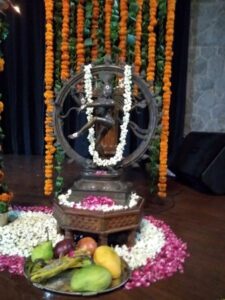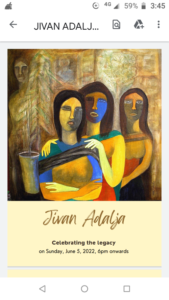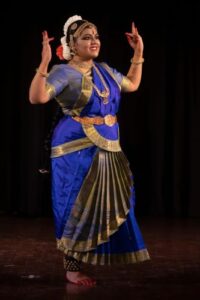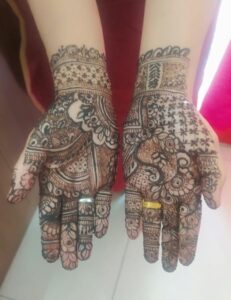Arts Polity

India being larger than Schengen countries (they have 26 countries, we 28 states plus 8 union territories), how does one even plan or think of one policy for the entire country? Well, we have one on agriculture then why not culture, aver many? Or we have on economic, social, financial and even maybe one on coal and mines! Can the vastness of India be straightjacketed into one homogenous cultural policy? What Nagaland eats or wears, reads or sees on TV may not be what Gujarat does or even one part of UP with the other. Is Andhra a region culturally or like two states now?
We had a piquant situation some years ago when attenDance, our yearbook, had planned a special issue on Andhra traditions. Dynamic dancer and rail services officer Ananda Shankar Jayant was chosen as our guest editor. Every once in five years or so attenDance yearbook (attendance-india.com) chooses a different voice from a lesser-known region/ tradition or form. So we had earlier done Traditions of Eastern India (Shyamhari Chakra), then Classical/Modern Dance (SD Desai) etc. In Andhra, as we were going to print, the state got divided into two – Telangana and Andhra – and at the nth hour, we changed the cover and our guest editor, smartly and sensibly changed the title to Telugu Traditions so no one had any issue with the issue.
So what is culture? Elliot wrote a booklet TOWARDS THE MEANING AND UNDERSTANDING OF THE WORD CULTURE almost a century ago and this booklet still holds true. It describes various faces and facets of culture and what it does.
Identity, first of all. A nation gets its identity from culture. Think of Japan or the USA. What comes to mind first? People. What ARE they? Industrious, academic or polite. Africa: happy, colourful and varied. Some stereotypes but still true. Indians: Mind over matter. Spiritual or material. Too many! North Indian or South. Within that so many choices and varieties. So how can one make ONE policy for all? And is that an excuse also, as has been since the last 70 years, to not even TRY?
India needs an ARTS policy first. Culture is a huge area, needing all stakeholders to discuss and decide. Sociologists, economists, historians, the media, universities, thinkers and artists. Under the overall umbrella of government, an Arts Policy is the first easy step and the Culture Ministry should be the nodal agency, as it is the most neutral and well linked to most cultural institutions and individuals. The PMO can be for overall monitoring because ultimately any policy will impact the PM and his standing and contribution too. This is the best time to do it too, when India has strong leadership and one Central Government with direction, not a mish-mash of coalition governments we have seen before, with complete policy paralysis. India today has presence, pelf and power in the real world outside. Achhe Din here so let’s get on with the task of an arts policy creation.
We need not copy anyone or cut and paste from other models because India is India. But some best practices can be obtained by studying and assessing Britain, which has a good arts policy in place; Sweden is most egalitarian and encompassing; France is most dynamic and democratic; Germany, empathic and efficient as even the Covid times showed. Japan is a case study in discipline management and the USA has the best PPP model, where industry meets arts and its best museums are run by endowments and corporate support. Poland has always had a polished policy, the result reflecting in art and architecture, design and graphics.
India now lacks culture and arts component in CSR or shall we say CSR lacks culture! Try selling a cultural show to corporate India and they want Bollywood dances, not classical. Try selling a music or dance book to corporates. They take months to decide for a paltry support of 50k! Their AGM costs 50 lakhs in dinner, travel, hotels and entertainment alone but they often hide under the fig-leaf of poverty alleviation, health and education causes. Forgetting that Arts is education. Health is mental too and arts help heal. Good music comes more often to a patient’s help than even meds. It is time India, especially its richest corporates, understand that and supports the arts, truly. Then only India and its best brand – artists – will shine. ‘Make in India’ as an idea has been done by Indian artists for long and shown the way. And also shown the world its immense content and context. Real clout comes from culture. Arts abound at its core. Art gives a value addition. It gives identity, substance and direction. Let’s move on in the right direction now. India’s moment has come.
Like Poland’s. How it has won world admiration for supporting the cause of Ukraine. Jivan daan. Jivan da (Adalja), the fine painter of Delhi, was sent in 1958 to Poland to study graphic design. He used to visit Sahitya Kala Parishad (SKP) when I was its Deputy Secretary in 1985, yes that’s indeed last century! His daughter Priti, with extra inner vision, was getting a scholarship then from SKP under the Delhi administration. Shakti Sinha, who passed away last year, was our big boss then as Secretary Education and Culture. Priti had difficulty in climbing the dingy staircase of that horrible building on Asaf Ali Road and I used to help father and daughter and he was so touched and grateful, because he was also not young. Recently, on June 5, his family and friends celebrated his first anniversary of his final journey last year when he left planet earth in 2021. Art gave meaning to the three generations of Adaljas. It gave meaning to his life and his daughter’s. His granddaughter Prakriti is the most sorted youngster I have come across. Polite, caring and well mannered, concerned. Willing to learn.
Dance debuts can be either fun or a faltu social event. Ambani family’s bahu-to-be made news and gave the word arangetram lot of (att)traction. It was thus good to see young debutante Ishita Joshi take to the IIC stage with clean hastas and a smiling, happy face. She gave a wholesome account of her training. Her body, at just 23, may carry extra weight making bends difficult but she showed stamina to dance almost 90 minutes under the tutelage of her guru Priya Venkatraman, who tells me that 27 years ago, I saw her arangetram in the same IIC hall and reviewed it for the Times of India, when I was its critic in Delhi. OMG is all I can say. Where have 27 and then some years gone? In the service of art and India.
Ishita Joshi
The hall was a case study in aesthetics. Alankar is a very important part of such functions, where flowers enhance the experience. Indian alankar, on stage, in person, on deities is an art work in itself. Even mehndi on hands. This is another interesting facet of our arts and aesthetics, which we often don’t even notice in day-to-day life.
In conclusion, any arts policy must be linked to employment as young India needs jobs. That’s critical. No policy can succeed unless it benefits people for whom it is meant in the first place. India also needs young artists, archivists even activists. Museums, cultural institutions need qualified people. Architects of a new, vibrant India. Come, let’s help build that by doing our bit instead of sitting and finding fault and wasting time on faltu issues. India today is a great opportunity to be in, we must do something for society and for the arts and culture. Rest will follow. If the foundation is strong then the building will stand tall. Arise, awake and help build brand India.
Ashish Mohan Khokar is a reputed authority on Indian arts and culture, with 40 years
of exemplary work in the field. He is also hailed as the gold standard of art journalism.
More on www.attendance-india.com






2 Comments
The real scenario of indian art field is very well presented in this article by Shri Aashish Mohan khokhar ji.He always writes truths (clear & cut ) with no diplomacy,to show the real aspects of what of arts & art field .
Loved it throughly…..
My best Regards to Shri Aashish Mohan khokar who genuinely care for arts & artists of India.
Like the last para which says, doing our bit instead of sitting and finding fault…it’s an eye opener, subtle yet a profound call to wake up, arise and take action